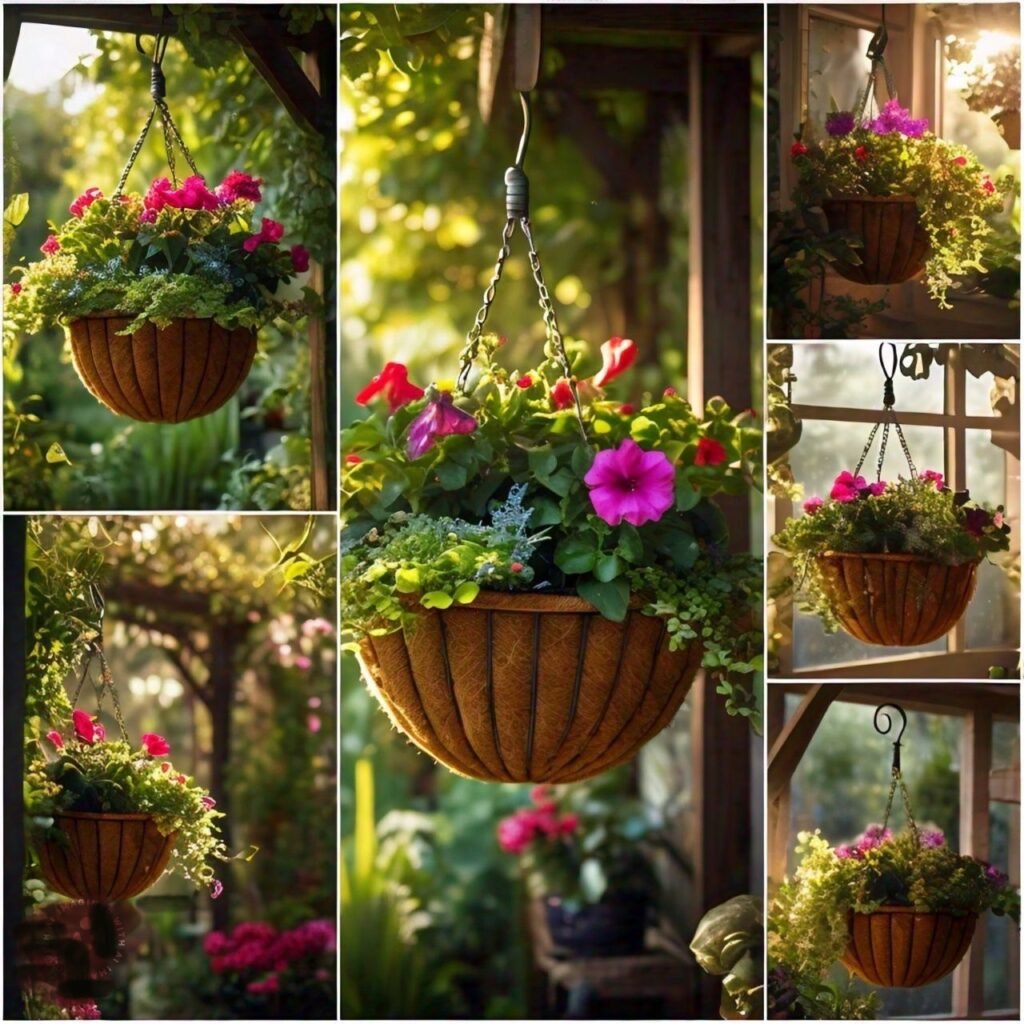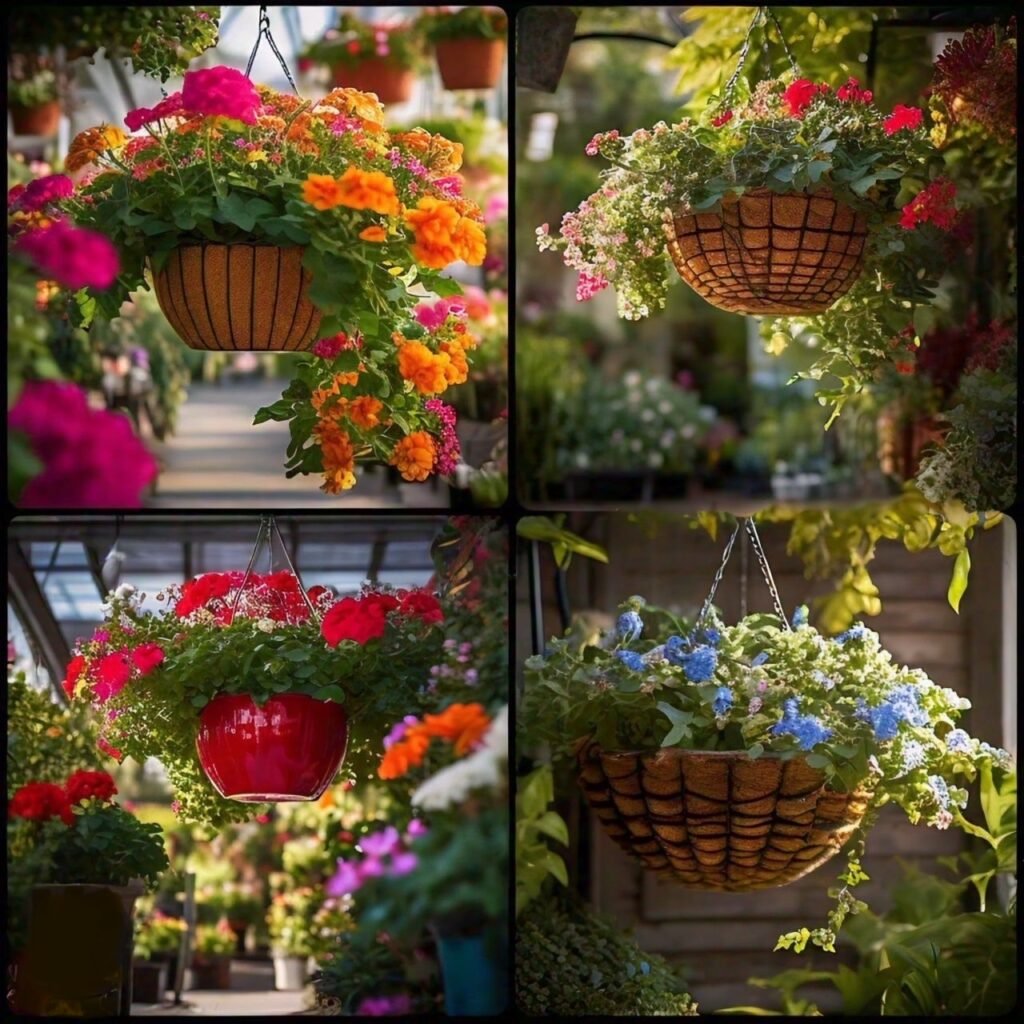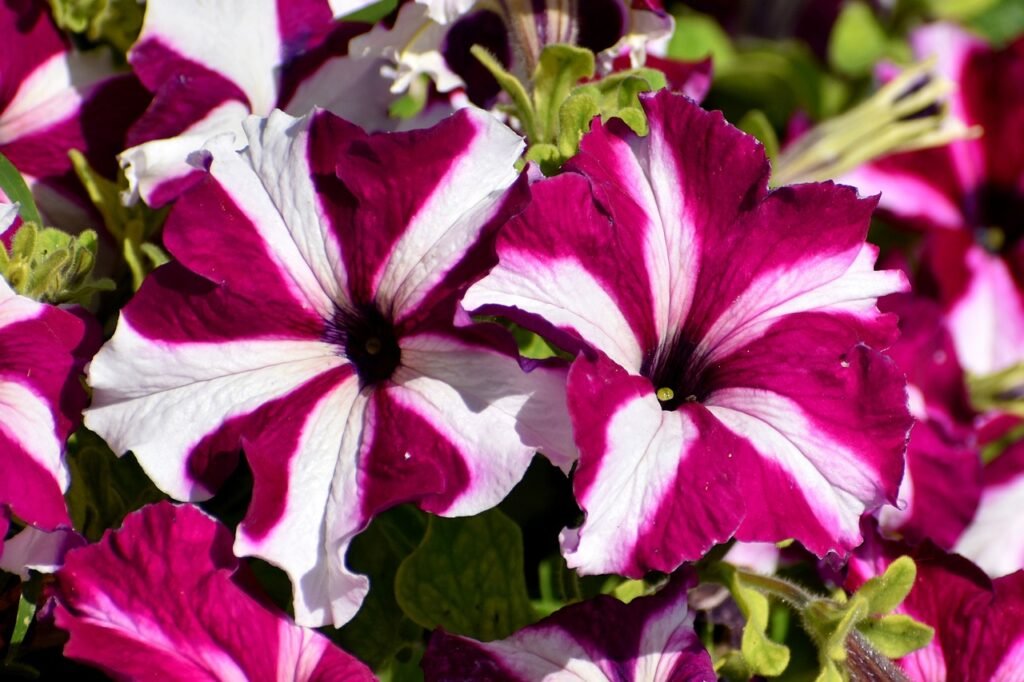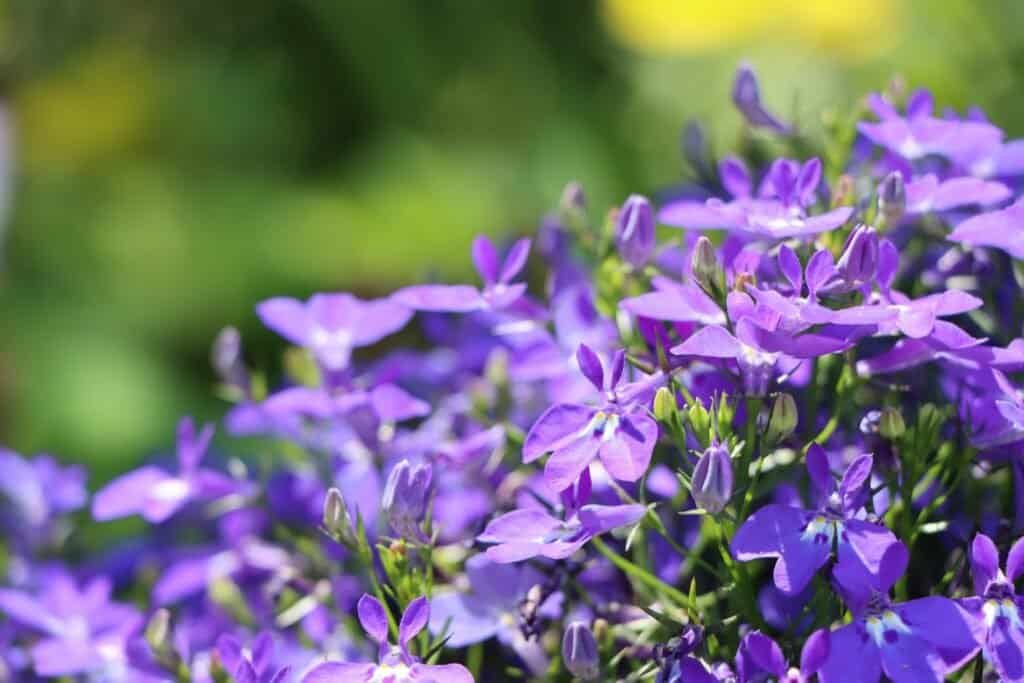How to Make Stunning Hanging Baskets for Your Garden
Disclosure: This post may contain affiliate links. If you click through and make a purchase, I may earn a small commission at no extra cost to you. As an Amazon Associate, I earn from qualifying purchases. Thank you for supporting My Stylish Backyard.
There’s nothing quite like the vibrant splashes of color that hanging baskets bring to outdoor spaces. From decorating a front porch to lining a garden path, these living chandeliers are an iconic sight of summertime. While store-bought hanging baskets offer convenience, designing your own allows you to get creative with plant combinations and tailored designs. In this guide, I’ll show you how to make eye-catching hanging flower baskets that will be the envy of your neighborhood.
Choosing the Right Basket and Materials
The first step is selecting an appropriate basket or container for your hanging floral display. Popular options include moss-lined wire baskets, sturdy plastic hanging pots, or even repurposed items like colanders or tin buckets. Whichever you choose, ensure it has adequate drainage holes and enough soil capacity for the plants you want to grow. Here are some good baskets that I use and work well for me when I make up my hanging baskets.
Next up, you’ll need a high-quality potting mix designed specifically for hanging baskets and containers. Regular garden soil is too dense and lacks the aeration needed for basket plants to thrive. Look for a lightweight, peat-based or coco-coir based potting mix enriched with slow-release fertilizer. Having the right growing medium gives your basket a strong start.
Other useful supplies include:
- Scissors or pruners for trimming plants
- Gardening gloves to protect your hands
- A small hand trowel for planting
- Water breaker or drip tray to catch excess moisture
Selecting Plants for Hanging Baskets
With the basket and potting mix ready, it’s time for the fun part – choosing your hanging basket plants! When selecting flowers and foliage, consider sun exposure needs, bloom times, growth habits and overall cohesiveness.

Trailing Plants
Since hanging baskets are viewed from the top down and all around, trailing or spilling plants create that signature overflowing look. Great options include calibrachoa, petunias, verbena, lobelia, sweet potato vine and ivy.
Upright Plants
Mix in some upright growers like geraniums, marigolds, salvias and osteospermums to add height and visual interest in the basket’s center. Their contrasting forms complement the trailing bloomers.
Filler Plants
Don’t forget filler plants! These help cover soil and create lush, full baskets. Tried and true choices are licorice plant, ivy, creeping zinnia and sweet alyssum.
When putting together your plant combinations, look for opportunities to incorporate complementary colors, textures and bloom times for non-stop floral interest.
Step-by-Step Guide to Planting
With your basket, soil and plant lineup ready, it’s time to start assembling! Here is a simple step-by-step process:
- Add a coir or moss liner if using a wire hanging basket. This helps retain moisture.
- Fill the basket 1/3 full with moistened potting mix. Gently firm it down.
- Arrange your upright plants like a small bouquet in the center, securing them in the soil. Space appropriately based on their mature sizes, allowing room for growth.
- Taking your trailing plants, carefully tuck their root balls through the sides and top of the basket about 6-8 inches apart. Backfill soil gently to cover roots.
- Once upright and trailing plants are positioned, fill in any gaps with your filler plants. Adjust spacing as needed.
- Top off with more potting mix, leaving just the top halves of plants exposed. Water thoroughly once completed.
- For an instantly lush look, tuck in extra annuals or ivy wherever you see spaces!
Be sure to elevate your hanging basket off the ground for at least 2-3 weeks after planting. This allows root systems to properly establish before adding weight from watering.
Caring for Hanging Flower Baskets

With your blooming hanging basket arranged, maintaining it is simple with these key tips:
Watering
Hanging baskets have minimal soil to hold moisture, so consistent watering is crucial. Check them daily, keeping the soil evenly moist but not saturated. Morning is ideal to prepare plants for hot afternoons.
Fertilizing
Feed every 1-2 weeks during the growing season with a balanced water-soluble fertilizer to supply ongoing nutrition. Slow-release fertilizers can help between feedings.
Deadheading
Regularly removing spent blooms (deadheading) encourages bushier growth and continued flowering for most plants. It’ll keep your baskets looking fresh!
Pruning
Periodically prune back leggy or overgrown plants to maintain your desired basket shape and control. This invigorates plants for future flushes of blooms.
With consistent care, most hanging flower baskets will thrive through the summer into early fall before going dormant. Replant them each year for seasonal color.
Design Ideas and Inspiration
Part of the joy in making your own hanging baskets is getting creative with designs! Here are some fun inspirations:
Seasonal Styles
- Spring baskets with cool-toned pansies, snapdragons and dusty miller
- Patriotic summer baskets in red, white and blue tones
- Autumnal baskets with chrysanthemums, ornamental peppers and ivy
Color Themes
- Monochromatic (single hue) baskets in lavender, yellow or pink tones
- Complementary color pairings like purple/yellow or red/green
- Analogous blends of harmonizing hues like pink, fuchsia and purple

Go Tropical
Fill baskets with bright gerbera daisies, hibiscus, elephant ears and trailing golden pothos for a taste of the tropics.
Edible Displays
Create an edible basket by tucking in herbs, cherry tomatoes, strawberries and leafy greens among flowers.
Get Resourceful
Repurpose items like teapots, birdcages or colanders as whimsical hanging basket containers!
5 of the Best Plants for Hanging Baskets
- Impatiens
‘Beacon Mixed’: dazzling busy lizzie in a mix of vibrant shades, offering brilliant resistance to downy mildew

- Verbena
‘Enchantment series’: jazz up baskets with cascades of red, purple or white blooms.

- Petunia
‘Night Sky’: novel purple blooms speckled with white are a head-turner (also try classic Surfinia trailing petunias).

- Fuchsia
‘Eva Boerg’: all-time favourite trailer with masses of pink-and-white semi-double flowers.

- Lobelia
‘Sapphire’: cascading plants are carpeted in a profusion of violet-blue flowers over long periods.

The options are limitless once you start experimenting with color schemes, plant textures and creative containers. Let your hanging baskets be an extension of your personal style. Most of all, have fun putting together floral masterpieces to enhance your outdoor living areas!
Conclusion:
Now that you know how to make stunning hanging flower baskets, it’s time to get started on your own designs. With the right basket, nutrient-rich soil and carefully selected plant combinations, you’ll be well on your way to a vibrant, overflowing hanging basket display. From sun-loving bloomers to spilling trails of color, these living chandeliers make a bold statement in any garden or landscape. So embrace your inner artist, adopt the care tips outlined above, and craft floral masterpieces that elevate your outdoor spaces into a lush, watercolor-worthy oasis. Here’s to a summer framed by the breathtaking beauty of hanging flower baskets!








